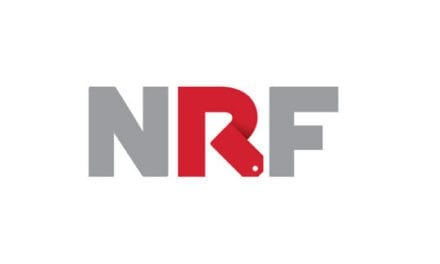Oil Prices Break $40 For the Week
- Six consecutive weekly crude oil lows
- Gasoline stocks fall three million barrels
- Winter gasoline crack spreads seasonally high
- Rare natural gas withdrawal from storage
Table covers crude oil and principal products. Other products, including residual fuel oil and “other oils” are not shown, and changes in the stocks of these products are reflected in “Total Petroleum Products.” Statistics Source: Energy Information Administration “Weekly Petroleum Status Report” available at www.eia.doe.gov
The Matrix
Crude oil prices continued to register new lows during the week ending August 5th. WTI spot futures broke to $39.19, continuing a decline that has seen six new weekly lows since the week ending June 24th. Prices have been under pressure since June 10th when a high of $51.67 was reached. A rally followed release of the U.S. petroleum supply/demand balance but an increase in crude oil supplies and in overall commercial stocks of oil are again weighing on values.
There have been some signs of stabilization in price. We noted last week that the rig count has risen off its lows. Nonetheless, recovery in supply from regions previously under duress and continuing growth in inventories supporting demand continue to drive values lower.
Gasoline supplies lost over three million barrels during the Report week. There are still 238 million barrels in storage. Eating into this volume has proven challenging but margins are strong, supporting demand and encouraging continuing production of gasoline.
September futures are now front month. This is important in gasoline because October is the first winter specification contract, priced now at $1.29, about 9.1 cents lower than September. There have already been reports of some shifts to production of winter spec gasoline.
Gasoline crack spreads are higher than the average of the past five years, offering opportunities to lock in good margins. And if refiners hedge winter at these levels, they will have less incentive to rein production in, extending the supply surplus in gasoline.
Supply/Demand Balances
Supply/demand data in the United States for the week ending July 29, 2016 were released by the Energy Information Administration.
Total commercial stocks of petroleum increased 2.1 million net barrels during the week ending July 29, 2016.
Builds were reported in stocks of fuel ethanol, distillates, propane, and other oils. Draws were reported in stocks of gasoline, K-jet fuel, and residual fuel.
Crude oil supplies in the United States increased to 522.5 million barrels, a build of 1.4 million barrels.
Crude oil supplies increased in three of the five PAD Districts. PAD District 1 (East Coast) crude oil stocks experienced a build of 1.5 million barrels, PADD 2 (Midwest) stocks increased 0.8 barrels, and PADD 4 (Rockies) stocks rose 1.0 million barrels. PAD District 3 (Gulf Coast) crude oil stocks experienced a decline of 1.3 million barrels and PADD 5 (West Coast) stocks fell 0.6 million barrels.
Cushing, Oklahoma inventories decreased 1.1 million barrels to 64.1 million barrels.
Domestic crude oil production decreased 55,000 barrels daily to 8.460 million barrels per day.
Crude oil imports averaged 8.738 million barrels per day, a daily increase of 301,000 barrels.
Refineries used 93.3 per cent of capacity, an increase of 0.9 percentage points from the previous report week.
Crude oil inputs to refineries increased 266,000 barrels daily; there were 16.852 million barrels per day of crude oil run to facilities. Gross inputs, which include blending stocks, increased 173,000 barrels daily to 17.097 million barrels daily.
Total petroleum product inventories saw an increase of 0.7 million barrels from the previous report week.
Gasoline stocks decreased 3.3 million barrels; total stocks are 238.2 million barrels.
Demand for gasoline decreased 44,000 barrels per day to 9.752 million barrels daily.
Total product demand increased 148,000 barrels daily to 20.950 million barrels per day.
Distillate fuel oil supply increased 1.2 million barrels; total stocks are 153.2 million barrels. National distillate demand was reported at 3.605 million barrels per day during the report week. This was a weekly decrease of 251,000 barrels daily.
Propane stocks increased 0.3 million barrels to 89.9 million barrels. Current demand is estimated at 1.065 million barrels per day, an increase of 187,000 barrels daily from the previous report week.
Natural Gas
According to the Energy Information Administration:
Net withdrawals from storage totaled 6 Bcf, compared with the five-year (2011-15) average net injection of 54 Bcf and last year’s net injections of 41 Bcf during the same week.
This is only the third time ever that net withdrawals from working gas stocks were reported on a national basis during the summer months. The two other summertime withdrawals both occurred in 2006 (July 21 and August 4), which predates the new five-region format of EIA’s WNGSR that was introduced in 2015. Working gas stocks total 3,288 Bcf, 464 Bcf above the five-year average and 389 Bcf above last year at this time. The net withdrawal on the national level resulted from two key factors: relatively small injections in the East and Midwest regions and large withdrawals from storage in the South Central region. The Pacific region also reported a net withdrawal of 4 Bcf for the week.
Prices are range bound. We expect the range between $2.75 and $3.00 to hold, reflecting response to summer heat and substantial imports from Canada.
Futures trading involves significant risk and is not suitable for everyone. Transactions in securities futures, commodity and index futures and options on future markets carry a high degree of risk. The amount of initial margin is small relative to the value of the futures contract, meaning that transactions are heavily “leveraged”. A relatively small market movement will have a proportionately larger impact on the funds you have deposited or will have to deposit: this may work against you as well as for you. You may sustain a total loss of initial margin funds and any additional funds deposited with the clearing firm to maintain your position. If the market moves against your position or margin levels are increased, you may be called upon to pay substantial additional funds on short notice to maintain your position. If you fail to comply with a request for additional funds within the time prescribed, your position may be liquidated at a loss and you will be liable for any resulting deficit. Past performance may not be indicative of future results. This is not an offer to invest in any investment program.
Powerhouse is a registered affiliate of Coquest, Inc.
Was this helpful? We’d like your feedback.
Please respond to [email protected]
or call: 202 333-5380
Copyright © 2016 Powerhouse, All rights reserved.












